Recently, Chinese archaeologists made astonishing discoveries at the legendary archaeological site of Tam Tinh Doi in Sichuan Province, southwest China.
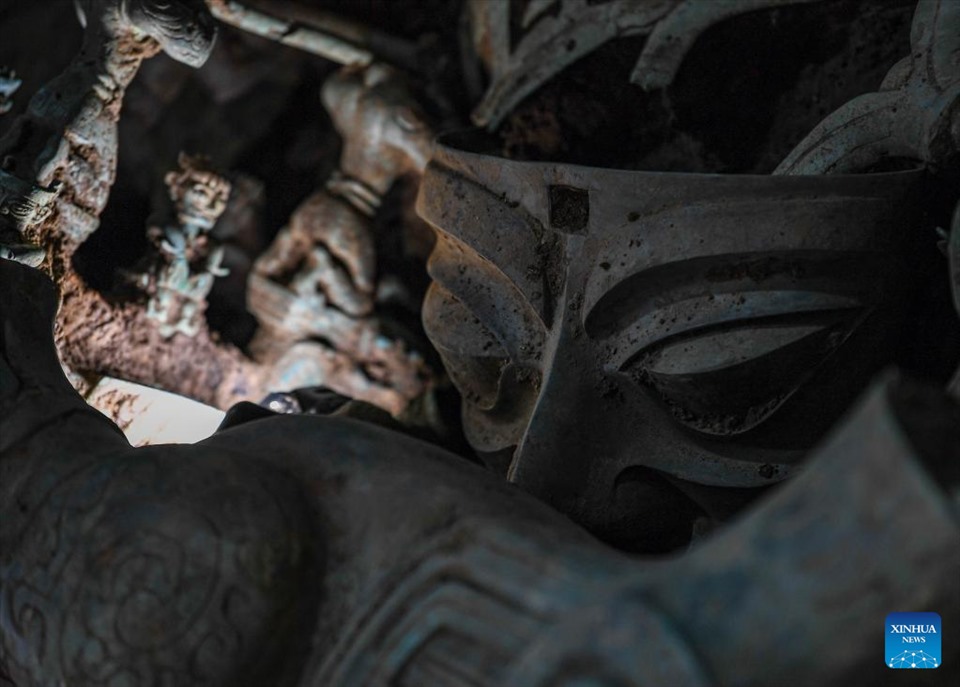
Chinese archaeologists are amazed by new discoveries at the legendary site .A treasure trove of exquisite bronze, gold, and jade artifacts, including at least 10 inscribed bronzes (characters engraved or cast on bronze items), has been excavated for the first time in the history of human civilization at Tam Tinh Doi, reported Xinhua on June 13 :
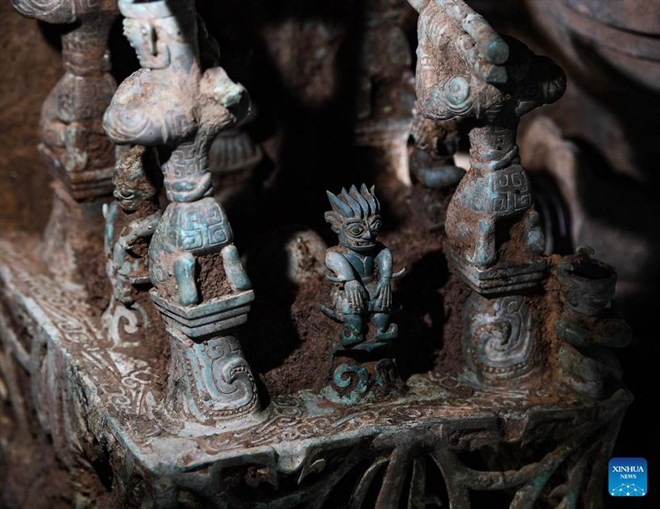
The archaeological team from the Institute of Cultural Heritage and Archaeology of Sichuan Province, Peking University, and other research institutions and universities have unearthed 6 sacrificial pits at Tam Tinh Doi since 2020.
The new archaeological findings at the legendary site in China mainly come from sacrificial pits 7 and 8, bringing the total number of relics discovered in the 6 pits at Tam Tinh Doi to nearly 13,000, according to the Institute of Cultural Heritage and Archaeology of Sichuan Province.
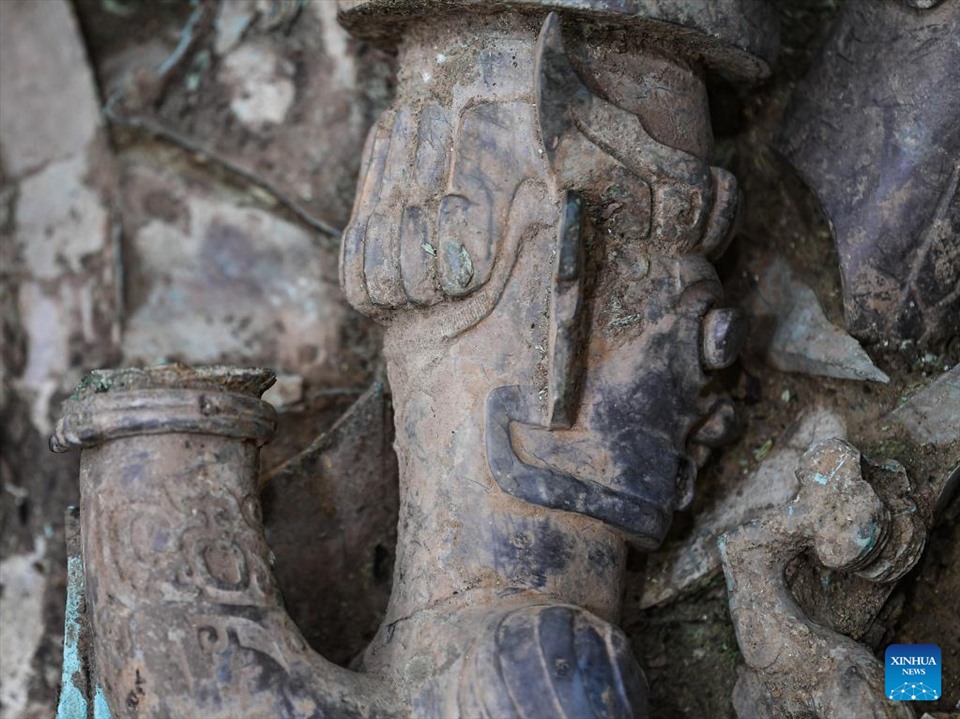
A bronze box containing items made of green jade was discovered in pit number 7, a notable highlight among the recently excavated relics. The box’s lid and bottom have turtle-shaped mesh patterns, while the sides are connected by bronze joints, and it has a handle shaped like a dragon’s head. Analysis by archaeologists indicates that this box was wrapped in silk.
“Although we don’t know the purpose of this vessel, we can see that ancient people highly valued it,” said Li Haichao, a professor at Sichuan University and the lead excavator at pit number 7 of Tam Tinh Doi.
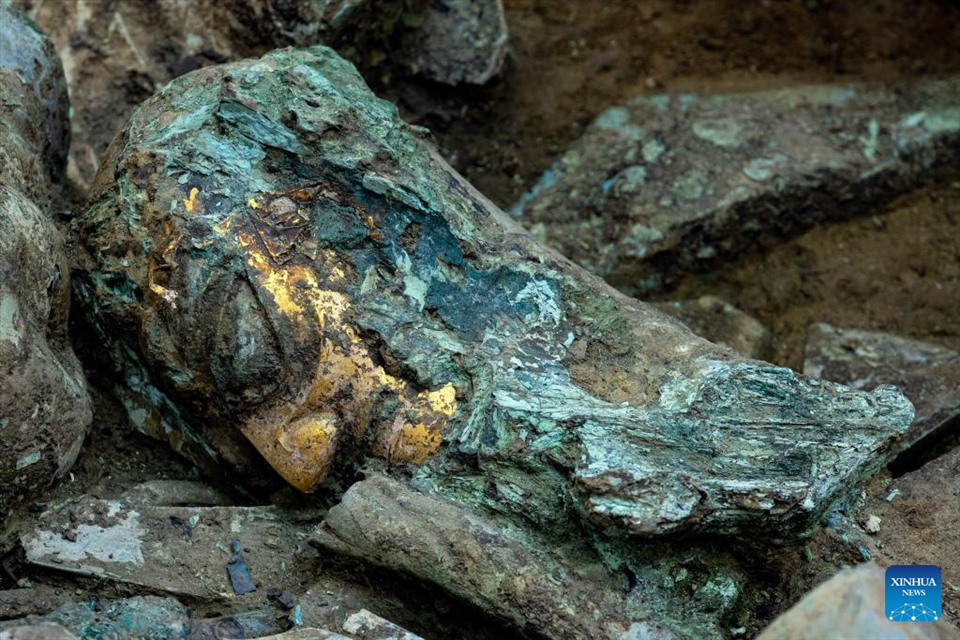
Several other precious artifacts made of jade, bronze, small figurines, and bells were also found in pit number 7.
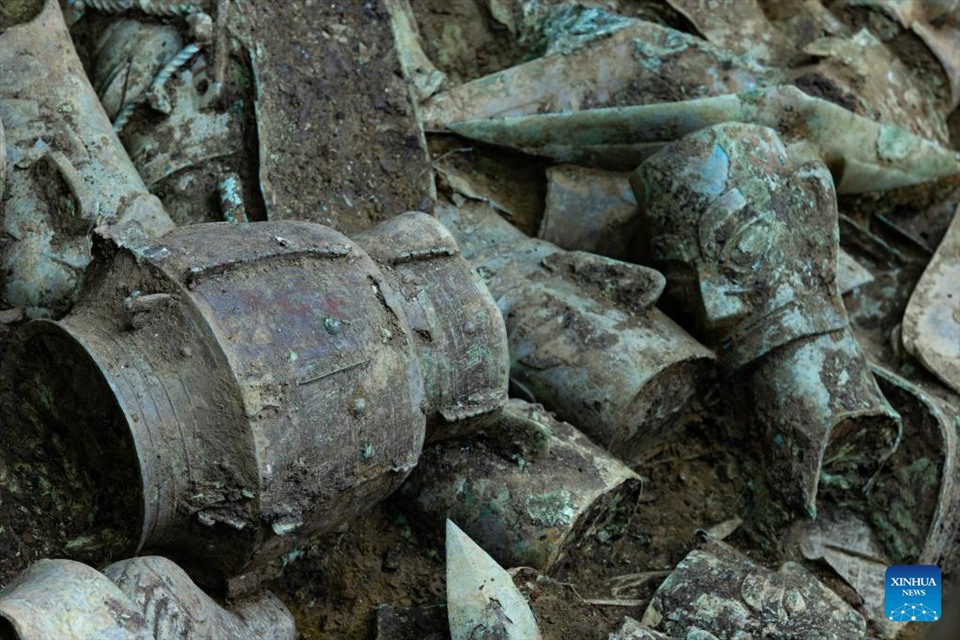
At sacrificial pit number 8 of Tam Tinh Doi, archaeologists unearthed various artifacts, including bronze heads with gold masks, a bronze sculpture with a human head and a snake body, a bronze altar, a giant mythological creature made of bronze, and a bronze object shaped like a dragon with a pig’s snout.
“Those intricate sculptures are very sophisticated and imaginative, reflecting the ancient world imagined by people at that time, and they demonstrate the diversity and richness of Chinese civilization,” said Zhao Hao, an associate professor at Peking University and the head of the excavation at pit number 8.
Around the sacrificial pits at Tam Tinh Doi, archaeologists also found ash pits, architectural foundations, small ritual pits, cultural relics, as well as remnants of bamboo, thatch, soybeans, domesticated animals, and wild boars that might have been sacrificed.
The Tam Tinh Doi site was discovered in the late 1920s and is considered one of the greatest archaeological discoveries of the 20th century worldwide.
Tam Tinh Doi is located in the city of Guanghan, approximately 60 kilometers from the provincial capital of Chengdu in Sichuan Province. This archaeological site covers an area of 12 square kilometers and is believed to be the remains of the Shu Kingdom, dating back approximately 4,500 to 3,000 years.





